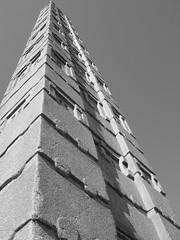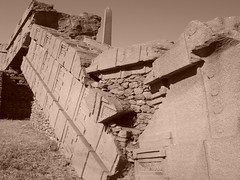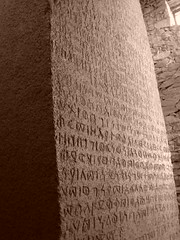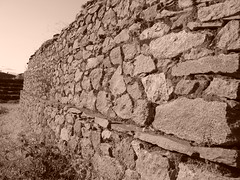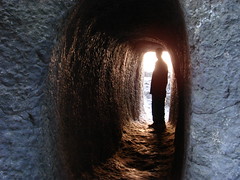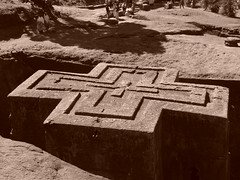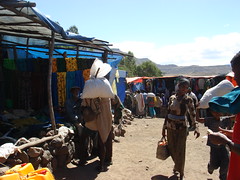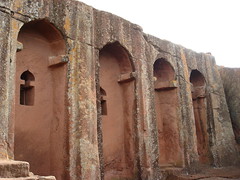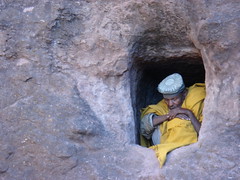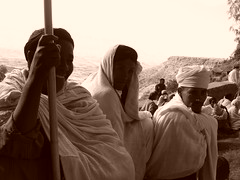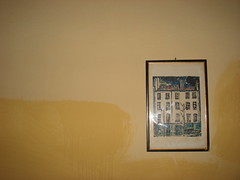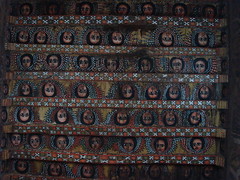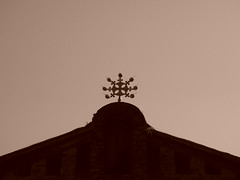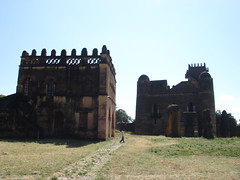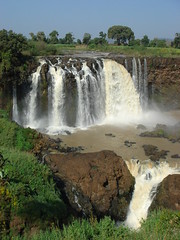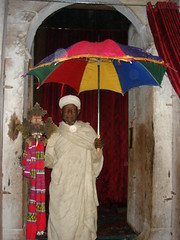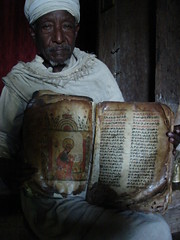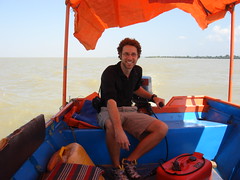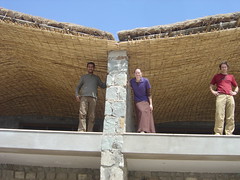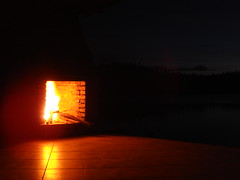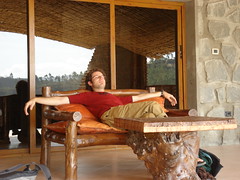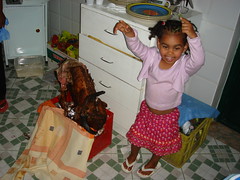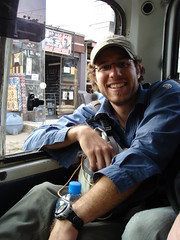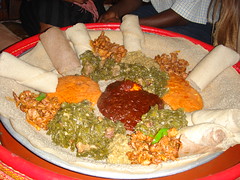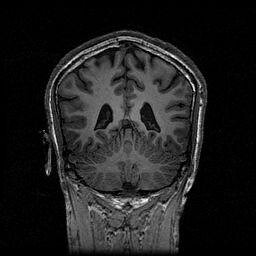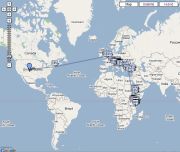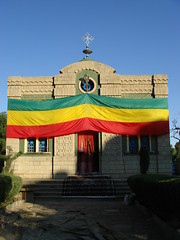
From the rubble palace we hurried over to see a few churches. The one old church that we went into, only open to men, of course had the obligatory ancient paintings of the cruficition, trinity, saint george, and mary, but for once they were in fairly decent shape, or not nearly as old as I was led to believe. From here we took a short walk to see the building that allegedly contains the 'Ark of the Covenant'. Haile told me some elaborate story about how it came to be in Ethiopia, but due to the 'no note taking' policy that he instated I'm afraid it's largely forgotten...something about king Solomon and Queen of Sheeba (who was Ethiopian) and their male offspring and ten tousand Jews bringing it back to Ethiopia.
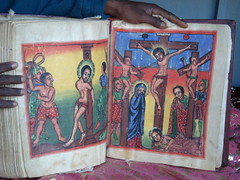
This relatively small building resides within a gated compound and in addition to holding the Ark a lot of the artifacts that have been found in the area are also kept in this building/compound. All of this is looked after by a 'keeper of the ark', a man who is 72 years old and hasn't left the compound in seventy years! There is another long story about how this keeper is chosen/replaced and why he hasn't left the compound, but I'll leave that to Google for those interested. On our way to a church next to this compound we approached a side gate through which tourists can view some of the artifacts from Ethiopian Orthodox church history that are kept in the compound, mainly various crowns and goat skin books. Thanks to Haile I have a photo
with said goat skin book.
As we approaced the gate the keeper of the Ark was actually out roaming inside the compound and he came over and had a nice friendly chat with Halie, they were apparently old friends. Haile instructed me that the keeper wanted to give me a blessing so I should step up to the gate. Now I had seen the 'blessing process' in Lalibela, which involves kissing the center of the cross held by the priest, then letting him touching it to your head, repeat, and then kissing the base. I thought I had it figured out. Well as I moved in for the first kiss I suddenly felt Haile's hand on the back of my head as he decided to take the liberty of making sure I did things right. Well I got the first kiss in ok and then the next thing I know the cross is being rubbed all over my face, then slapped on my back neck and shoulders before being offered for the base kiss. Obviously a different blessing process in Axum! Unfortunately no one is allowed to photograph the keeper so Haile didn't catch any of this action.

After my blessing, Haile leans over and whispers that he has told the guy that looks after some of the artifacts (different guy from the Ark Keeper) that I am an Archaeology student and has convinced him to show me a precious rock carving of the portrait of the Queen of Sheeba, something which is normally not for viewing. The rock is promptly brought out on a blue velvet pillow for me to ooh and ahh and snap a couple of photos. Of course, not being satisfied with just 'showing' me something special Halie then convinces this guy to hand over the rock through the fence so that he can get a
picture of me holding it.
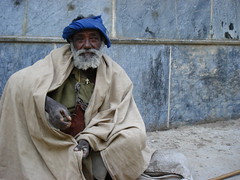
After handing back history we took a short walk to a large
church built by the Emperor Haile Selassie, passing a few kids playing
hide-n-seek. Inside the church I was marched passed a few more ancient paintings (one of the
journey of the ark), and another ancient goat skin book. On the way out we passed an enterprising old man who convinced me to pay him to take a picture. To wrap things up we stopped by for a quick visit at the local museum, which Halie had called and convinced to stay open late for us. By this point I was a bit tired from the blitz tour and factually overwhelmed so I remember next to nothing about the museum...but there were some
nice glasses.

After a full 5 hours of seeing Axum, a place I could have easily spent a week, I headed back to my hotel for a relatively early night. The next morning I was up with the sun and ready to head to the airport for my early flight...of course the only on time flight of the entire trip was my flight back to Addis!






